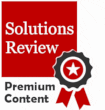A Data Catalog Definition and Integration Strategy Roadmap

This is part of Solutions Review’s Premium Content Series, a collection of contributed columns written by industry experts in maturing software categories. In this submission, Boomi Chief Innovation Officer Ed Macosky offers a data catalog definition, explainer, and how to incorporate one into your organization’s integration strategy.
 Data drives a business…plain and simple. Today’s businesses have vast quantities of data, and it’s everywhere. Forrester reports that between 60 and 73% of enterprise data goes unused for the purpose of analytics. In many cases, the data in question is unknown or dormant, meaning it’s also uncatalogued and inaccessible.
Data drives a business…plain and simple. Today’s businesses have vast quantities of data, and it’s everywhere. Forrester reports that between 60 and 73% of enterprise data goes unused for the purpose of analytics. In many cases, the data in question is unknown or dormant, meaning it’s also uncatalogued and inaccessible.
So, what’s the big deal?
Missing and/or inaccessible data creates problems; it can cause business leaders to make decisions based on incomplete or incorrect information. It results in missed business opportunities and could mean that sensitive data subject to regulations such as GDPR and HIPAA isn’t being properly protected. Data catalogs can help.
Widget not in any sidebars
Data Catalogs Explained
Similar to a library’s physical or online catalog system that helps readers find and access a book they need, a data catalog is a complete inventory of data assets within an organization. A data catalog manages metadata, allows for rapid search and discovery, supports access control, and enables data governance. It leverages metadata to help data engineers, data stewards, and users within a business organize, secure, and find trustworthy data by identifying data type, classification, location, owners and editors, and more.
A survey from Wakefield Research and Elastic found that over 50% of business professionals spend more time searching for files than doing actual work. This is a problem. Data catalog technology can help organizations improve their data readiness via transparent, searchable, quality data, and enable extensive company collaboration in the process. Providing a centralized repository enables organizations to bring together data from across systems, applications, and people to build a resource of trusted, complete, and current business intelligence. Data catalogs can also streamline operations by migrating, consolidating, and rationalizing data at the speed of today’s business, with a customer-centric focus.
When data is trustworthy, properly governed, and easily accessible by those who need it, the entire organization benefits through optimized operational efficiency, increased organizational trust, reduced risks, and lower costs.
Data Catalogs Aid in Data Discovery
Data catalog solutions allow users to import data sets, search and augment them, or add metadata by applying tags, all of which aids users in the data discovery process. Users can then see similar data sets in different solutions. This is especially important in mergers and acquisitions (M&As). Before two companies can become one, IT leaders must know what data exists and where it resides to integrate both companies’ data. Having a data catalog in this instance reduces liabilities associated with unknown sensitive data or personally identifiable information (PII) when the integration takes place.
Another use case is self-service analytics where a centralized portal or data marketplace helps users find, understand, and trust democratized data – including master data – without IT intervention. Self-service analytics improve productivity and accelerate time to insights. Data catalogs can also help data stewards implement data governance, as they can effectively ensure the right people have access to the right data at the right time based on roles and established policies, preventing mismanagement of said data.
Incorporating a Data Catalog into a Company’s Integration Strategy
There are a few things to consider when incorporating a data catalog into a company’s integration strategy. Look for a solution that has the following capabilities:
- Fully Managed Service. A cloud-based, fully managed service platform has no infrastructure to set up, manage, or maintain. That makes it easy to deploy, minimizes costs, and allows data engineers to focus on business goals and objectives.
- Intelligent Automation. Artificial intelligence (AI) drives scalability. Once an organization has connected its data sources, an intelligent AI engine can automatically profile and tag data assets, map relationships, and find data similarities.
- Discovery and Collaboration. Finding data should be easy. Natural language processing (NLP) search enables data users to quickly find the data they need. It also helps users understand it via a data dictionary and business glossaries. If questions arise, users should be able to chat with experts and peers within the platform.
- Governance and Security. With governance and security capabilities built into the data catalog, organizations can automatically detect PII at a row and column level, and control access to it with role-based permissions. This helps businesses stay compliant with internal policies and industry regulations.
Get More Work Done
Data proliferation is growing as enterprises progress on their digital journeys. When users can readily find the critical data they need, when they need it, it gives them more time to focus on the business at hand. Connected, integrated, and truthful data leads to frictionless migrations, productive users, and happy customers. It’s a win-win for everyone.
Widget not in any sidebars
The post A Data Catalog Definition and Integration Strategy Roadmap appeared first on Solutions Review Technology News and Vendor Reviews.
from Solutions Review Technology News and Vendor Reviews https://ift.tt/eXxzOLA
Comments
Post a Comment